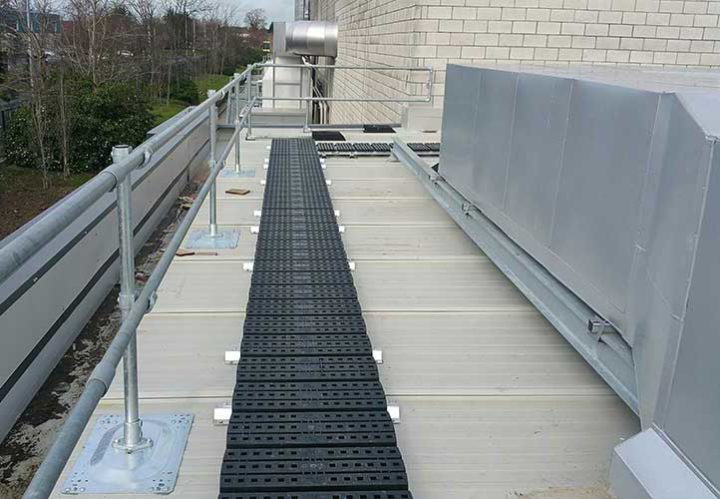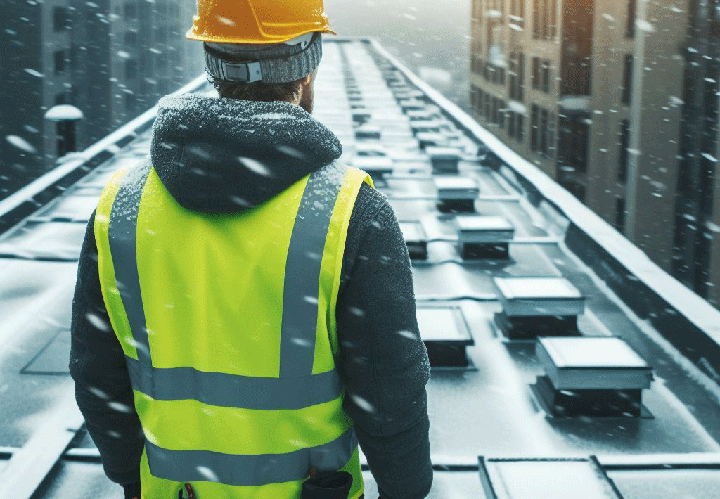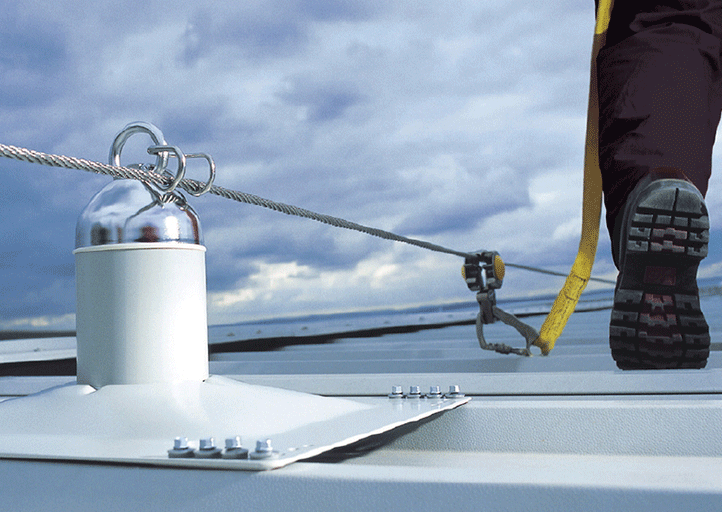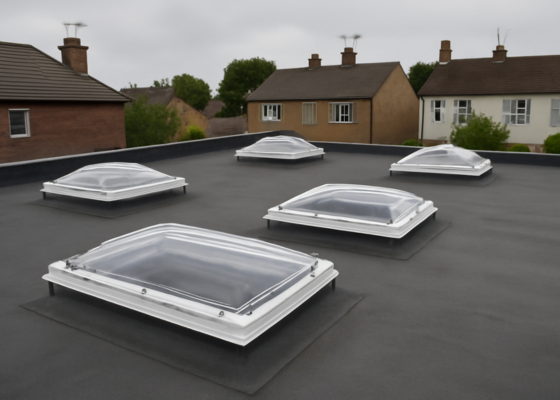As a building owner, ensuring the safety of your employees, contractors and visitors should be a top priority. Falls from height are one of the leading causes of severe injuries and fatalities in the workplace, making it crucial to identify and do all you can to reduce potential fall hazards.
So to help you keep people safe on your roofs, here are 9 fall hazards that building owners and those responsible for the safety of people need to be aware of:
1. Unprotected edges and openings
These are the most obvious yet most significant hazards to address. Any unprotected edge or opening where a person could fall from one level to another poses a risk. This includes roof edges, balconies, mezzanines and openings for roof hatches or skylights. While guardrails, safety gates or rooflight covers are effective, certain situations may require alternative or additional measures. Building owners should carry out a thorough risk assessment with guidance from a fall protection expert to determine the most suitable solution.
2. Skylight and voids
Skylights and voids can be deceptive hazards. Without proper markings or covers, they become invisible traps for people on a roof or elevated area. Even though they may be covered, skylights are generally not designed to withstand the weight of someone standing on them. Especially if they are carrying tools and equipment. Over time they can also become concealed with dirt, blending in with the surrounding area. Clear marketing and signage should also be in place to warn workers about these hazards. Building owners should also consider installing sturdy rooflight covers or guardrails around these openings to prevent accidental falls through fragile surfaces or voids.
3. Fragile surfaces
Falls through fragile surfaces account for 22% of all fall from height fatalities in the construction industry. And this includes maintenance. The HSE states that:
“all roofs, once fixed, should be treated as fragile until a competent person has confirmed that they are non-fragile.”
Ageing roofs or fragile surfaces are potential accident sites waiting to happen. Fragile surfaces such as fibre-cement, present a serious risk. Precautions need to be taken before starting any work to ensure the structural integrity of the surface. Even seemingly sturdy structures can deteriorate over time, becoming fragile due to corrosion or ageing and giving way under minimal weight. Building owners should ensure that appropriate precautions are taken when people are working on or near these surfaces, such as using crawling boards with a suitable fall protection system or safety nets.

4. Slippery surfaces
Water, grease, leaves or even debris can turn a seemingly stable surface into a slip hazard. Regular inspections and cleaning regimes and the use of anti-slip materials are essential preventative measures. Building owners could also consider installing a rooftop walkway to provide a safe, anti-slip surface across the roof area.
5. Lack of fall protection training
Employees who work at heights should receive comprehensive fall protection training to ensure they understand the risks involved. This should also include instructions on how to use fall protection equipment correctly. While collective protection, such as guardrails, may require less extensive training, personal fall protection equipment, such as a mobile anchor or safety line system, will require comprehensive training on usage and maintenance. Building owners should prioritise providing the appropriate training and making sure their employees follow safe working practices.
6. Poorly maintained fall protection systems
You need to be confident that the equipment will perform as it should if someone falls. Using damaged or outdated equipment can lead to serious accidents or injuries. Fall protection systems, such as guardrails and personal fall protection systems, require regular inspection and maintenance to ensure they remain effective. Building owners should establish a maintenance programme, keep detailed records and have their equipment tested and certified by a competent company at least annually to ensure compliance with regulations. Any work-out or damaged items must be replaced immediately.

7. Adverse weather conditions
Inclement weather, such as strong winds, rain or snow can increase the risk of falls and make working at heights more hazardous. The safety of people working at height must always take priority over the task at hand, so a cautious approach must be taken in adverse weather conditions. High winds, for example, should warrant calling work at height to a halt.
8. Falling objects
When working at height, tools and materials can fall and strike people below. This can cause injuries or, in some cases, fatalities. Toe boards and tool tethers can reduce the risk of items falling or being dropped, while good housekeeping practices can help prevent tools from falling.
9. Complacency
The most dangerous hazard of all is complacency. Over time, familiarity with the work area can lead to carelessness. Building owners must instil a culture of safety, where vigilance and adherence to procedures are non-negotiable. Regular safety meetings, hazard assessments, toolbox talks and open communication channels can effectively tackle complacency.
How building owners can overcome fall hazards
Addressing these nine fall hazards can help building owners take proactive steps to create a safer work environment and reduce the risk of falls from heights. Regular risk assessments, implementing appropriate fall protection systems, providing adequate training, and maintaining a culture of safety are essential for protecting workers and ensuring compliance with health and safety regulations.


